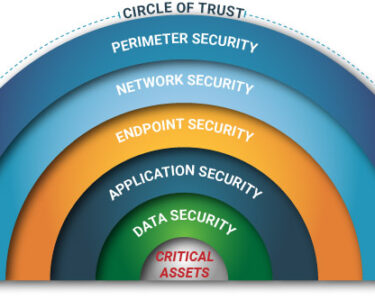
Navigating Digital Security: A Comprehensive Guide
In today’s increasingly digital world, protecting our online presence has become paramount. From online banking to social media, we entrust countless aspects of our lives to the internet. However, this connectivity also exposes us to various cybersecurity threats. To navigate this digital landscape safely, it is essential to understand and implement robust digital security measures.
Understanding Cybersecurity Threats
- Malware: Malicious software designed to harm or steal information from devices.
- Phishing: Attempts to trick users into revealing confidential information by posing as legitimate sources.
- Hacking: Unauthorized access to computer systems or networks to steal data or disrupt operations.
- Identity Theft: Theft of personal information used for fraudulent activities.
- Spam: Unsolicited bulk electronic messages often used for malicious purposes.
Best Practices for Digital Security
1. Use Strong Passwords
- Create unique and complex passwords for each online account.
- Avoid using personal information or common words.
- Consider password management tools to securely store and generate passwords.
2. Enable Two-Factor Authentication (2FA)
- Adds an extra layer of security by requiring a second form of verification during login, such as a code sent to your mobile phone.
3. Update Software and Operating Systems
- Regularly update software and operating systems to patch security vulnerabilities that may be exploited by attackers.
4. Be Wary of Suspicious Emails and Links
- Do not click on links or open attachments from unknown senders.
- Hover over links to see if they lead to legitimate websites before clicking.
5. Use a Firewall and Antivirus Software
- Install a firewall to block unauthorized access to your computer network.
- Use antivirus software to scan for and neutralize malicious software.
6. Secure Your Home Network
- Use a strong password for your Wi-Fi network.
- Enable network encryption to protect transmitted data.
- Use a virtual private network (VPN) to encrypt your internet traffic.
7. Be Aware of Social Engineering Tactics
- Be cautious of requests for personal information or financial details online or over the phone.
- Never share sensitive information over unencrypted channels.
8. Be Vigilant About Your Online Activity
- Use privacy settings on social media and other online platforms to limit the visibility of your personal information.
- Be mindful of what information you share and who you share it with.
- Regularly monitor your online accounts for suspicious activity.
9. Educate Yourself
- Stay informed about the latest cybersecurity threats and best practices.
- Attend webinars, read articles, or consult with experts to enhance your knowledge.
10. Plan for a Breach
- Have a backup plan in case of a data breach, including procedures for contacting authorities, notifying affected individuals, and mitigating the damage.
Conclusion
Navigating digital security requires a proactive and multifaceted approach. By implementing these best practices, you can significantly reduce the risk of being compromised online. Remember, cybersecurity is not just about protecting your devices, but also safeguarding your personal information, privacy, and financial well-being. By staying vigilant and embracing a culture of digital security, you can safely navigate the digital landscape and enjoy the benefits of online connectivity without compromising your safety.



